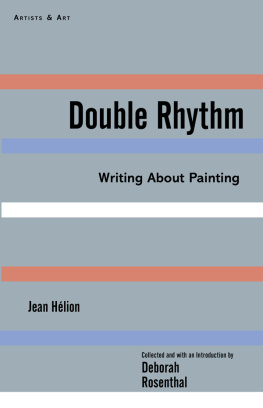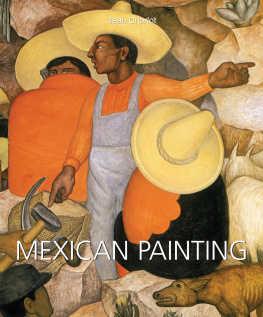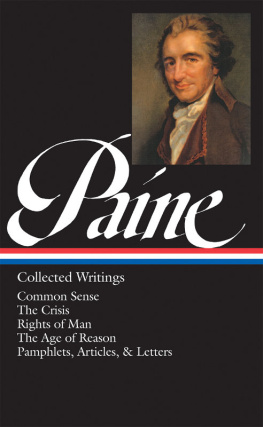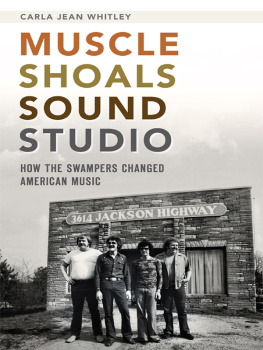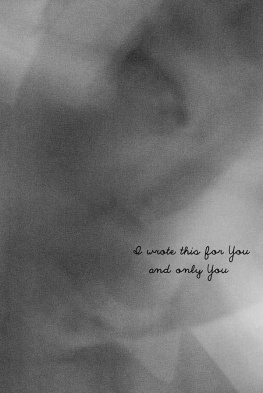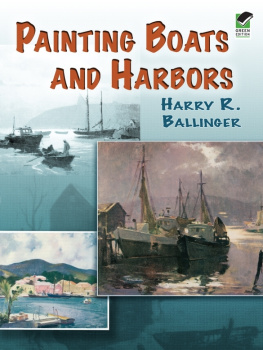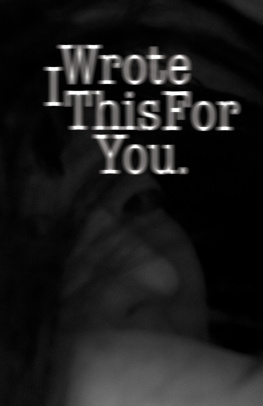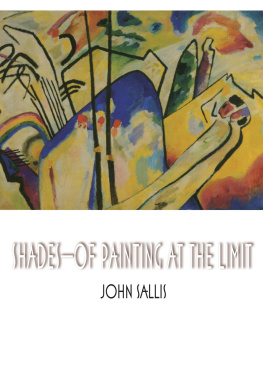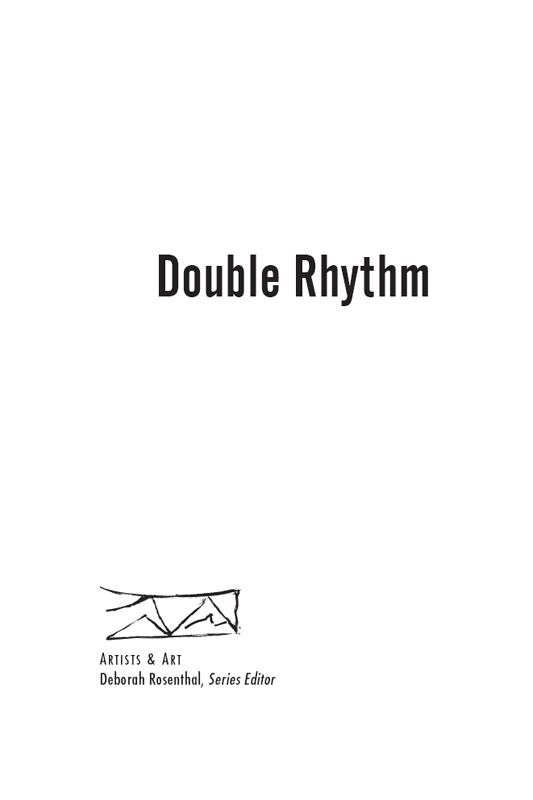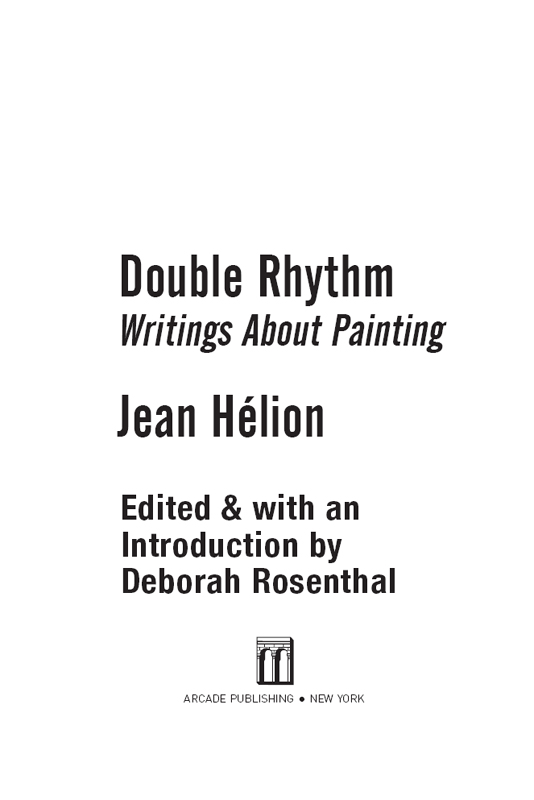Books in the Artists & Art Series
Series Editor: Deborah Rosenthal
They Shall Not Have Me by Jean Hlion
Introduction by Deborah Rosenthal
A Free House! Or The Artist As Craftsman by Walter Richard Sickert
Edited and with a memoir by Sir Osbert Sitwell
The Changing Concept of Reality in Art by Erwin Rosenthal
Introduction by Deborah Rosenthal
Biographical note by Julia Rosenthal
Contemporary Art in the Light of History by Erwin Rosenthal
Introduction by Lance Esplund
Form and Sense by Wolfgang Paalen
Introduction by Martica Sawin
Paris Without End: On French Art Since World War I by Jed Perl
New introduction to the second edition by the author
Double Rhythm: Writings About Painting by Jean Hlion
Edited and with an introduction by Deborah Rosenthal
The special contents of this book copyright 2014 by Arcade Publishing
Translation of Figure copyright 2014 by John Ashbery
Translation of Art Concret l930 copyright 2014 by Jacqueline Ventadour Hlion
Translation of New York City, all Headnotes and Introduction copyright 2014 by Deborah Rosenthal
The editors are especially grateful to Jacqueline Ventadour Hlion for her cooperation in the preparation of this book and her willingness to see these essays published.
All Rights Reserved. No part of this book may be reproduced in any manner without the express written consent of the publisher, except in the case of brief excerpts in critical reviews or articles. All inquiries should be addressed to Arcade Publishing, 307 West 36th Street, 11th Floor, New York, NY 10018.
Arcade Publishing books may be purchased in bulk at special discounts for sales promotion, corporate gifts, fund-raising, or educational purposes. Special editions can also be created to specifications. For details, contact the Special Sales Department, Arcade Publishing, 307 West 36th Street, 11th Floor, New York, NY 10018 or .
Arcade Publishing and Artists & Art are registered trademarks of Skyhorse Publishing, Inc., a Delaware corporation.
Visit our website at www.arcadepub.com.
10 9 8 7 6 5 4 3 2 1
Library of Congress Cataloging-in-Publication Data is available on file.
Cover design by Elena Giavaldi
ISBN: 978-1-61145-908-1
Ebook ISBN: 978-1-62872-403-5
Printed in China
Acknowledgments
Thanks to Jacqueline Hlion, the artists widow and a dear friend, for years of conversation and insight about Hlion.
M. Yves Chevrefils Desbiolles, responsable des fonds artistiques at the IMEC archive, could not have been more helpful and welcoming during my brief stay at the charming Abbaye dArdenne and after.
I am glad to have had the erudite Nathan Perl-Rosenthals help with idiosyncratic French.
Thanks to Nick Lyonsextraordinary editor, publisher, writer, and friendwithout whom the Artists & Art series and this book would not exist.
Jed Perls profound understanding of art and books, in all their aspects, has been illuminating as I prepared this book, and through the last four decades.
I salute all my artist friends with whom Ive shared an enthusiasm for Hlion the painter and writer.
D EBORAH R OSENTHAL
2013
Contents
by Deborah Rosenthal
Introduction
Painting is a language, Jean Hlion writes, at the end of one of the articles included in this volume. This terse statement, the climactic final sentence of his essay Poussin, Seurat, and Double Rhythm, makes a challenge to the readerand to the viewer. Hlion challenges himselfand his fellow painters, and everybody who looks at paintingsto look for as much fullness and experience and meaning in a painting as we expect to find in a great piece of writing. He urges us to regard a paintings elements as an alphabet, with its complex forms comprising a vocabulary deployed as a syntax. But in writing this, Hlion also poses a paradoxa riddlefor painting is an eloquent language but also a mute one. And many good and great painters have chosen to remain silent next to their worksmore, indeed, than have written about them.
So why then do painters write about painting? Though this question would elicit different answers when raised about different artists, it is hard to imagine Hlions not writing. He was an articulate and cerebral artist whose gift for language led him to write major articles not only in French but also in English, a language not his native tongue. Even so, he more or less warns us that no words can supply a lack in the painting; the painting must do everything in the language of painting that the painter can make it do. Anything that an artist might write about paintingeven a well-chosen and apposite title for a pictureis overflow; extraneous to the pictures which must stand on their own as independent and whole utterances. Hlions painting is a language may even be seen as a challenge thrown up to speech or writing: Does writing about painting reduce painting? Explain it away? Translate it into an inadequate equivalent? Ultimately, Hlions copious writings may pose the question whether, for an extremely articulate painter, the mute language of painting can suffice. Many twentieth-century artists would argue that it cannot suffice, among them Braque, Klee, Mondrian, Kandinsky, and Matisse. In the writings of the creators of modernism, I think it is possible to hear, however faintly, a desperationa desperation to engage with words when the mute language of painting has undergone a change that threatens to render it unintelligible.
Like Wordsworth, whose poetic diction banished the fanciful flourishes of eighteenth-century language, the modernists transformed the language of painting so that people found the language, as Randall Jarrell once joked of Wordsworths, so simple they couldnt understand it. And so we have both expository, rationalized theoretical writingsuch as Kandinskys Point and Line to Plane and hortatory, oracular writings such as Braques notebook aperus, or Mondrians Plastic Art and Pure Plastic Art and Klees Creative Credo.
Jean Hlion was an artist of overflowing energy and talents, a man whose hugely productive life in the studio was, throughout a career that went from the 1920s into the 1980s, always accompanied by writing. He had been painting seriously only a few years before he became involved in Parisian literary-art publications. From then on, his writing on painting ranged widely: articles surveying the whole field of European abstract art; essays on painters of the past who he thought had particular importance for painters of his day; descriptions of his studio practice; analysis of his own paintings; diaristic musings on art, life, relationships, and work. This book gathers all the texts that Hlion published originally in English, along with a couple translated from the French but published first in English.
When, in the vividly idiosyncratic English prose that Hlion used to write these essays, we find the word maximum several times, we should see not only what Hlion is pointing at (a painting by Poussin, a painting by Mondrian), but also the writer, implicating himself. The early decades of the twentieth century in Paris were a language-changing time. And maximum was the perfect word for Hlion, who began to write about painting as a young man already fully committed to the new painting language of modernism and specifically to abstraction, whose invention he had missed out on by just a few years. Maximum : it is a word that an abundantly confident (and optimistic) young man, newly in possession of his talents, would use. Hlion had arrived in Paris in 1921, still in his teens, and within five years or so had made friends in the heart of the Parisian avant-garde. Born in 1904, he had grown up in a village in the north of France and made his way to Lille, the nearest big city, for brief studies in chemistry, then to Paris for an architectural apprenticeship, also brief. Though most of the French painters resumed their figurative investigations after the upheavals of Fauvism and Cubism, Hlion found in Paris and then abroad a group of painters and sculptors making their individual statements in the vocabulary of abstractionand he was convinced.

